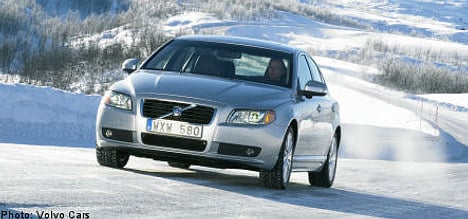Global sales grew 11.2 percent to 373,525 compared with 334,808 in 2009, the company said in a statement on Friday. However, the figure is still shy of the 374,297 cars sold in 2008, when sales declined from 458,323 the previous year.
“For the Volvo Car Corporation, 2010 was a year of changes…On August 2nd, Zhejiang Geely Holding Group completed the acquisition of 100 percent of the Volvo Car Corporation from Ford Motor Company,” corporate spokesman Per-Åke Fröberg said in a statement on Friday.
“The Volvo Car Corporation returned to profit in the first quarter of 2010 and kept up the momentum throughout the year,” he added.
In addition, Volvo sales continue to fall in the US despite a rebound in the auto sector, with US auto sales rising to their highest rate in 16 months in December. US sales fell 12.2 percent or 7,474 to 53,952.
Sweden will soon overtake the US as Volvo’s biggest market, the company added.
In China, sales increased by 36.2 percent and 29 percent in Nordic countries. Other strong markets included Russia, where sales increased by 54.5 percent, Belgium by 35.9 percent and Norway by 38.9 percent.
The XC60 compact crossover remained Volvo’s best-selling car, selling 80,732 worldwide last year, followed by two station wagons: the V50 with 56,098 units sold and the V70, selling 48,872 units.
The XC60 and V50 are manufactured in Ghent, Belgium, while the V70 is produced in Torslanda, outside of Gothenburg in western Sweden. In 2010, Volvo recruited about 500 additional staff to work at these two plants, with some of these positions becoming permanent.
Other manufacturing locations include Uddevalla northwest of Trollhättan in western Sweden, Chongqing in western China, Thailand and Malaysia.
After naming CEO and Geely Chairman Li Shufu as its chairman on July 15, the company also appointed Stefan Jacoby as president and CEO several weeks later and presented a new board in connection with the new ownership.
The company highlighted the positive reception the company has received to the launch of the new Volvo S60 sedan and V60 estate car last year in its annual review.
It also unveiled a new five-cylinder two-litre diesel engine design for the S60, bringing fuel consumption down to an estimated 5.3 litres per 100 kilometres with a manual gearbox.
The Volvo S60 was launched at the Geneva Motor Show in early March and features pedestrian detection with full auto brake.
Separately, at the biennial 2010 Paris Motor Show in October, Jacoby confirmed plans for Volvo’s launch of a plug-in V60 hybrid next year and noted that the foundation for the hybrid would be the V60 model.
The V60 plug-in hybrid will have carbon dioxide emissions of just 49 grammes per kilometre and the car will be equipped with a battery that can be recharged in four to six hours and provide up to 50 kilometres in pure electric range.
Both car models include a new infotainment system where information about the audio system, navigation unit, mobile phone and other functions is presented on a 13- to 18-centimetre colour screen.
The company also emphasised its pledge to develop cars entirely free from exhaust emissions and carbon dioxide.
Measures include the introduction of high-efficiency diesel models with very low CO2 emissions, an electrification strategy with a test fleet of C30 Electric and market introduction of plug-in hybrids as early as next year.



 Please whitelist us to continue reading.
Please whitelist us to continue reading.
Member comments